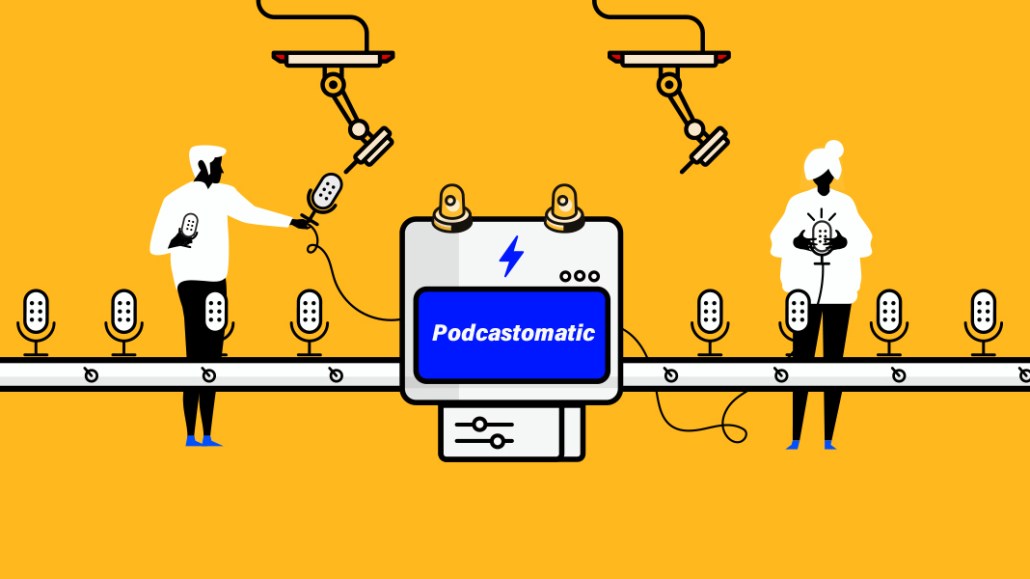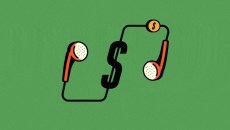Why podcast ad buyers are hesitant to spend through demand-side platforms

Despite improvements in podcast advertising that have made it easier to buy ads through programmatic channels, buyers are slow to adopt true programmatic podcast buying through a demand-side platform, according to buyers who spoke with Digiday.
There are a variety of reasons for this: host-read ads are still king in the medium, not all podcast networks or shows have inventory available to buy programmatically, and buyers often feel the need to vet the content to ensure contextual alignment when targeting specific audience segments or category verticals across a number of podcast networks.
However, while some buyers have little to no interest in buying ads through a DSP, others are planning to test out or put more money into buying ads programmatically this year, as the technology and targeting and measurement capabilities continue to improve and more inventory becomes available to buy programmatically, according to conversations with four buyers.
The share of podcast ad dollars being spent programmatically remains a sliver of podcast ad spending. In 2021, programmatic represented 2% of total podcast spend, per the Interactive Advertising Bureau. By 2024, it will account for just shy of 10% of U.S. podcast ad spending, predicted Insider Intelligence.
“Programmatic is still relatively in its infancy in the audio space compared to other channels in media,” said Robyn Meyers, vp of programmatic for AdsWizz.
Why the hesitancy around programmatic ad buying?
Why are some podcast ad buyers resistant to buying ads through a DSP? One of the reasons is certain inventory isn’t yet available to buy programmatically, buyers said. Larger buys, sponsorships, host-read ads and custom formats are typically bought directly from a platform such as Spotify, Pandora or iHeartMedia, buyers told Digiday.
Maria Tullin, vp and managing director of advanced and digital audio at Horizon Media, said buying podcast ad inventory through a DSP is “not appealing to my team.”
Kristen Coseo, director of podcast and digital audio strategy at Ocean Media, said her team prefers to work directly with networks due to the relationships they’ve built. “The majority of the reps that we work with, we’ve been working with them for a lot of years now. So the trust is there.”
Buying podcast ads through a DSP would also, in some ways, mean more work for the agency, Coseo said. Her team would need to ensure everything is running efficiently and monitor results, she said. When working directly with a podcast network, the network “sets everything up based off the parameters we give them. By going direct, we are putting trust in our partner to make sure they are selecting the correct targeting parameters and setting up our campaign as we requested,” she added.
It’s also more difficult for brands with smaller budgets to bid for a “preferred placement” — such as an ad placed in a top podcast show — on a DSP, said Mark Pappas, svp of innovation at CMI.
One buyer — who did not feel comfortable speaking on the record to summarize agencies’ hesitancy to buy podcast ads programmatically — said there is a “sect of the podcast ecosystem that is anti-programmatic that does not exist in other mediums,” which they believe is due to being “burned” by issues with programmatic display ad buying.
Why some buyers prefer programmatic
For those buyers who are transacting through a DSP, the biggest benefit is better reporting. Buyers can see which shows and episodes the ads ran in and can control frequency management, or how many ads were served in a specific household. This can’t be done (yet) with direct buys, two buyers said. That being said, iHeartMedia CEO Conal Byrne said the company offers that level of reporting for its direct-sold inventory.
Molly Schultz, svp of integrated investment at UM, said her team prefers to buy through a DSP because they can target a specific audience segment across networks. Because of this, buying ads through a DSP is also better for clients that have smaller budgets and can’t “commit to massive spends,” CMI’s Pappas said. Clients can test the podcast space with those smaller budgets going into DSPs to get their “feet wet with audio,” he said.
It’s also a pricing strategy: programmatic buying means “being able to pay what the market demand is,” Schultz said. Programmatic buying gives a “real-time rate,” she said.
Despite Schultz’s preference for buying podcast ads programmatically, she noted her team still has to vet a host and the content of a podcast series by having direct conversations with networks. “The same types of third-party verification tools that we use [for other media channels] aren’t available when within podcasts. So we do have to rely on a lot of first-party intel to help ensure safety,” Schultz said. “Just buying an audience or buying a content vertical doesn’t give you quite enough guardrails. You still have to dig in a little deeper,” she added.
Expect to see more programmatic buying in podcasts
Bob Hunt, senior director of audio at Omnicom Media Group’s Hearts & Science, said the agency is spending slightly higher than the 2% share in IAB’s report of advertisers’ podcast spend in programmatic channels. But his team wants to put even more money into DSPs.
“There is a desire to grow that percentage,” he said. Hunt declined to say how much more of a share will go to programmatic channels, but said he believes more money will go into DSPs as more advertisers test out the podcast space.
“We are increasingly having conversations with both the partner landscape, as well as clients, about the ability to transact programmatically. About 12-18 months ago, it was very much an idea, something that you could do, versus in 2023 we are actually trying to make that a reality,” Hunt said.
The main reasons for the lag are a significant portion of podcast inventory is only available to buy directly from a network and many top podcast shows sell out of their direct inventory, with no inventory leftover to place into an SSP, Hunt said. However, both Hunt and Schultz said they are also seeing more networks make more inventory available on SSPs. That, combined with the fact that DSPs have improved their analytics to provide show and episode-level reporting, means buying podcast ads through a DSP has become “a much more attractive proposition,” Hunt said.
Coseo said Ocean Media “might start to dip our toes” in buying ads through a DSP this year, to see if programmatic buying is a more efficient or effective way to purchase inventory for clients, she said.
Buying podcast ads through a DSP is “fairly new in podcasts,” said iHeartMedia CEO Conal Byrne. “It could be a bit of another inflection point for our medium honestly, in the next 12 to 24 months as [agency holding companies] come in and start to buy more and more that way.”
More in Media

Media Briefing: The top trends in the media industry for 2025
This week’s Media Briefing takes a look at the top trends from 2025, from digital advertising revenue performance to AI licensing deals.

Digiday Scorecard: Publishers rate Big Tech’s AI licensing deals
Digiday has compiled a scorecard grading AI platforms to make sense of the growing number of players in the AI content licensing market.

Publishers are hunting for AI prompt data — now they’re starting to get it from third-party companies
Publishers are finally gaining some visibility into AI search, as new prompt data tools crack open a black box.








